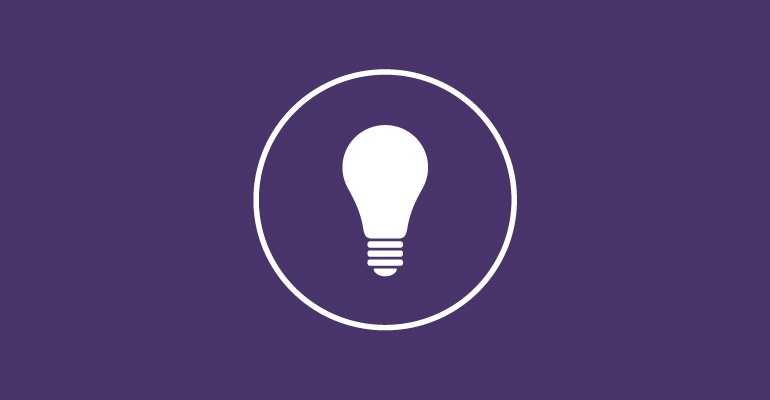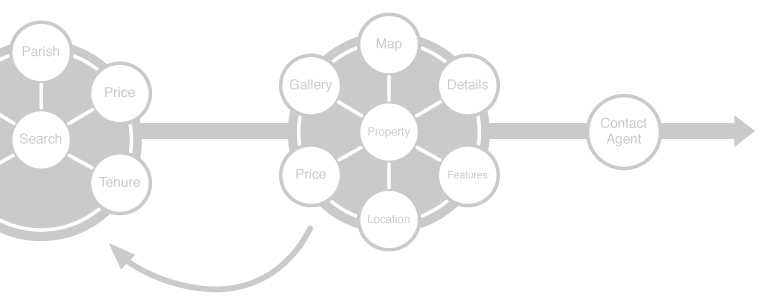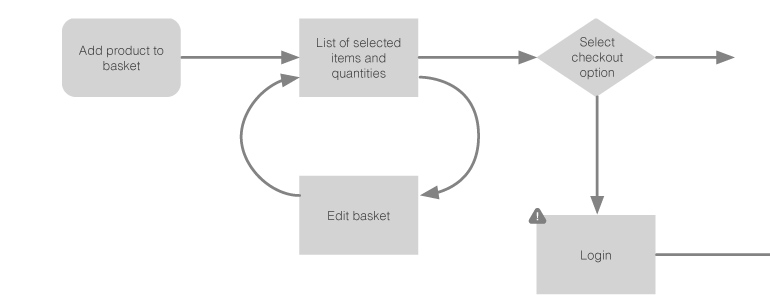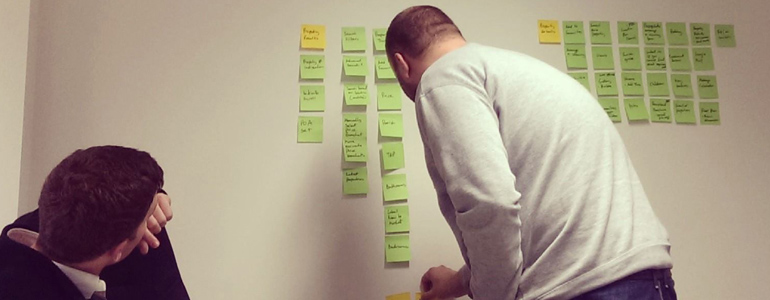This initial stage of discovery is the most fundamental step in the production of a new website and one that can be easily overlooked by designers and clients eager to visualise the website's interface. It's essential to complete this step in order to make educated decisions when structuring content, designing layouts and developing new functionality.
1. Research
Google Analytics Review
For website redesigns our first port of call is a clients Google Analytics account, if one exists. We distinguish a few key pieces of information from all of the noise and make some initial recommendations. There are a few key questions we ask ourselves and compile the findings into a report:
- What are the top viewed pages?
- What are the top selling products?
- What are the top keywords sending visits?
- What are the demographic and interest reports during the previous 12 months?
- What are the most important goals on the website to determine it’s success?
SWOT
We have our own bespoke SWOT analysis to produce some interesting niches and research data for our clients new website. This analysis is conducted on the clients current website (if one exists) and also 2-3 competitors, here are some example questions:
Strengths
- What are the website advantages?
- Where is the website achieving the business goals?
- Where is the website achieving the user goals?
Weaknesses
- Where does the website lack resources?
- What is the website doing poorly?
- Where is the website losing money?
- What areas of the website need improvement?
Opportunities
- Are there any beneficial trends?
- Are there niches that competitors are missing?
- Are they any new technologies that could be utilised?
- Are there new needs of customers now or in the future?
Threats
- Are there obstacles to overcome?
- Are there any aggressive competitors?
- Are there any successful competitors?
- Is there any government regulation?
- Is there a changing business climate?
User Questionnaire
A well targeted questionnaire can be a powerful way to gauge the needs of the user and what might already be working on the website.
A substantial mailing list of opted-in subscribers is required to gain worthwhile data and an incentive should be used if possible to encourage a high response rate.
We have not found a better system than Survey Monkey to gather this data and send out the questionnaires. Here are the kind of questions we ask:
- Where are you located?
- What is your gender?
- Where are you based?
- What type of device do you normally use to view the website?
- What is normally your reason for visiting the website?
- How easy was it to achieve your goals on our website?
- How could we improve our website to help you achieve your goals more efficiently?
- How easy was the checkout process on our website?
- How much do you trust the online checkout process on our website?
- Please feel free to add any other comments/suggestions so we can improve our website.
The questionnaire results complete the research phase of our discovery process, the information we gather from this is invaluable for the next phase...
2. Content Strategy
The structure of the content is decided through a few different ways depending on the complexity of the project. Every one of our projects has a sitemap but for a simple website we'll probably skip the user journey and maybe the task model step because this would not be overly complicated.
Personas
A persona is a document that describes the way certain types of people will use your website. Personas provide us with a quick reference for design decisions, ideas and strategic website changes.
Each persona is based on a real person from research if possible, through speaking to the client or contacting members of the demographic. Sometimes a member of the Indulge team is suitable if we have enough experience within a certain industry or regularly purchase a product the client is selling.
Here are some different types of personas based on a online baby clothes retail store:
- First-time mother trying to buy everything she needs
- Mother of two or more who needs to make a large necessary purchase
- A relative looking for a gift for a mother
Personas have two goals:
- To help you make design decisions
- To remind you that real people will be using your system.
We create one persona for each user type, focusing on the key goals users will be trying to achieve on the website.
Task Model
A task model shows what tasks a user needs and expects to do to complete a goal, focusing on their behaviours.
Each unique need of the user and decisions they will make to achieve the specific goal is written on a post-it and grouped together, for example an e-commerce would have the following groups:
- Research
- Purchase
- Post-purchase
We initially draw out the task model using marker pens on our whiteboard wall using different types of connecting element to show the decision making process:
Direct Connection
One task leads to the next.
Controlled Evaluation
Users move between known variables to make a decision.
Complex evaluation
Users need to freely explore often unrelated variables to help them make decisions.
User Journey
A user journey details the exact steps a user goes through to complete a task or goal, in a logical process flow diagram.
They differ from task models in that they show the required interactions and paths through a system, rather than the desired behaviour.
Similar to the task model our user journeys are initially drawn out on our whiteboard wall using marker pens and post-its.
Sitemap
The sitemap is a combination of the research and the content strategy so far, working the website pages into a tree structure.
We initially draw out the sitemap on our whiteboard wall and use post-its to quickly rearrange pages and other elements. This all happens during workshop style session that includes the production team and importantly the client.
Each node in the tree is labelled with a number relating to the page template it will be using during the design phase, we find that really helpful when it comes to the design phase.
Content Requirements
This final part of the process drills down into the specific content requirements for each goal, giving the user the correct content they need to easily complete their desired actions. We also specify how this content will be created and gathered by the client or ourselves.
Receiving the content soon after it's been defined is essential to delivering the project on time and designing the appropriate layouts.
Content requirements are populated during the whole process e.g. while reviewing the questionnaire results or producing the persona documents.
The End Result
The completed and documented discovery process provides us with enough resource to design a quality website that meets the needs of the user and goals of the business.











